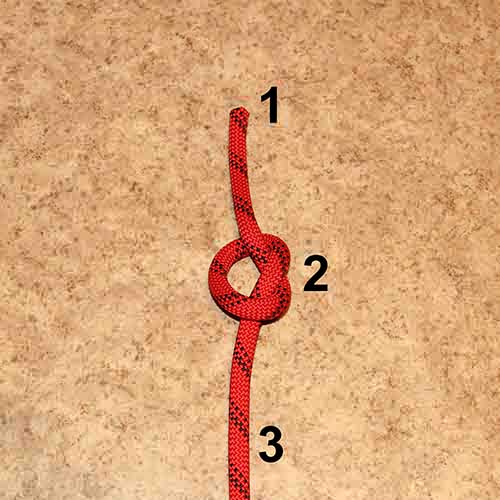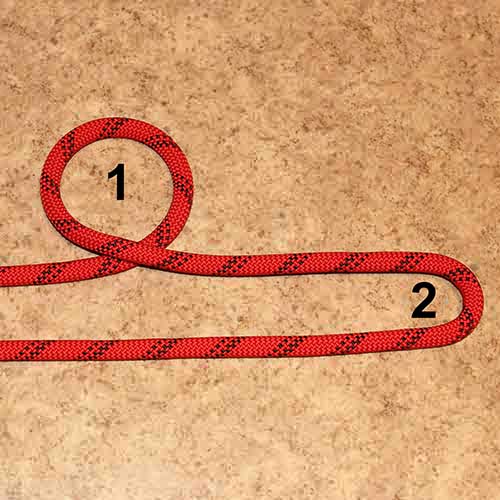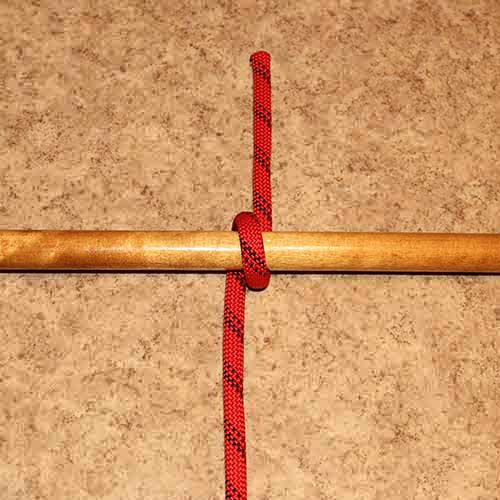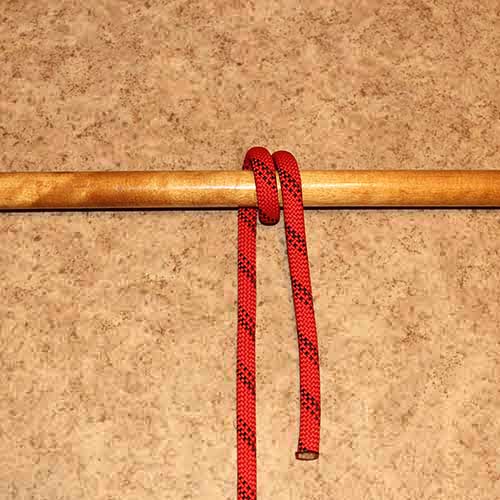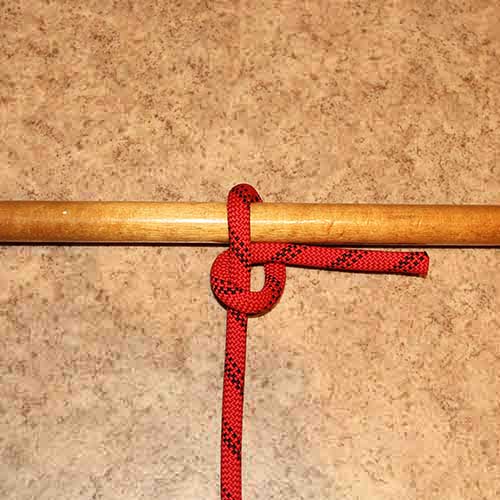List of knot terminology
Bend
A bend is a knot used to join two lengths of rope.
Bight
A bight is formed by doubling back a length of the rope against itself to form U shape. A bight is a length of rope that does not cross itself. Knots that can be tied without use of the working end are called knots on a bight.
Binding knot
Binding knots are knots that either constrict a single object or hold two objects snugly together. Whippings, seizings and lashings serve a similar purpose to binding knots, but contain too many wraps to be properly called a knot. In binding knots, the ends of rope are either joined together or tucked under the turns of the knot.
Bitter end
Another term for the standing end. As a ropeworker’s term, “bitter end” refers to the end of a rope that is tied off. In British nautical usage, the bitter end is the ship end of the anchor cable, secured by the anchor bitts and the bitter pin in the cable locker under the forecastle, hence the expression “hanging on to the bitter end”. (A bitt is a metal block with a crosspin for tying lines to, also found on piers.)
Capsizing
A knot that has capsized or spilled has deformed into a different structure. Although capsizing is sometimes the result of incorrect tying or misuse, it can also be done purposefully in certain cases to strengthen the knot or to untie a seized knot which would otherwise be difficult to release.
Dressing
Knot dressing is the process of arranging a knot in such a way as to improve its performance. Crossing or uncrossing the rope in a specific way, depending on the knot, can increase the knot’s strength as well as reduce its jamming potential.
Eye
The eye is in fact what is often (in error) referred to as a loop. The eye functions in the same way as an eye bolt or an eye splice. The eye provides a means to form connections. Note that the eye of a knot (or a splice) is fixed and does not slip. If it slipped, it would not function as an eye – it would act like a noose.
Flake
A flake refers to any number of turns in a coiled rope. Likewise, to flake a rope means to coil it. Flaking or Faking also means to lay a rope on a surface ready to use or to run out quickly without tangles.
Fraps
Fraps or frapping turns are a set of loops coiled perpendicularly around the wraps of a lashing as a means of tightening.
Friction hitch
A friction hitch is a knot that attaches one rope to another in a way that allows the knot\’s position to easily be adjusted. Sometimes friction hitches are called slide-and-grip knots. They are often used in climbing applications.
Half hitch
The half hitch is a knot made by passing the end of a rope around itself and through the loop thus made. Insecure on its own, it is a valuable component of a wide variety of useful and reliable hitches, bends and knots.
Hitch
A hitch is a knot that attaches a rope to some object, often a ring, rail, spar, post, or perhaps another rope, as in the case of the rolling hitch.
Jamming
A jamming knot is any knot that becomes very difficult to untie after use. Knots that are resistant to jamming are called non-jamming knots.
Lashing
A lashing is an arrangement of rope used to secure two or more items together in a rigid manner. Common uses include the joining of scaffolding poles and the securing of sailing masts. The square lashing, diagonal lashing, and shear lashing are well-known lashings used to bind poles perpendicularly, diagonally, and in parallel, respectively.
Loop
Loop may refer to:
– a curve that bends round and crosses itself
– a type of knot used to create a closed circle in a line
A loop is one of the fundamental structures used to tie knots. It is a full circle formed by passing the working end of a rope over itself. When the legs of a closed loop are crossed to form a loop, the rope has taken a turn.
Loop knot
A loop knot is a type of knot that has a fixed eye. Unlike a hitch, a loop knot creates a fixed eye in a rope that maintains its structure regardless of whether or not it is fastened to an object. In other words, the eye can be removed from an object without losing its shape.
Noose
A noose can refer to any sliding loop in which the loop tightens when pulled.
Open loop
An open loop is a curve in a rope that resembles a semicircle in which the legs are not touching or crossed. The legs of an open loop are brought together narrower than they are in a bight.
Overhand knot
The simplest of the knots.
Round turn
Wrap of the rope completely around a spar so that the running end comes back along the standing part of the rope.
Running end
The end of the rope that is used to tie the knot. Also referred to as the working end.
Seizing
A seizing is a knot that binds two pieces of rope together side by side, normally in order to create a loop. The structure of seizings is similar to that of lashings.
Setting
Setting a knot is the process of tightening it. Improper setting can cause certain knots to underperform.
Slipped knot
A slipped knot is any knot that unties when an end is pulled. Thus, tying the slipped form of a knot makes it easier to untie, especially when the knot is prone to jamming.
Spilling
The same as capsizing. Deforming into a different structure.
Splice
Splicing is a method of joining two ropes done by untwisting and then re-weaving the rope’s strands.
Standing end
The standing end (or standing part) of a rope is the part not active in knot tying. It is the part opposite of the working end.
Stopper knot
A stopper knot is the type of knot tied to prevent a rope slipping through a grommet. The overhand knot is the simplest single-strand stopper knot.
Turn
A turn is one wrap of rope around a spar or stake so it continues off in the same direction, or one round of a coil.
Whipping
A whipping is a binding knot tied around the end of a rope to prevent the rope from unraveling.
Working end
The working end (or working part) of a rope is the part active in knot tying. It is the part opposite of the standing end.
